Hip to Be Square
Your Spanish language school is in the centro histórico, not far from the main square. The heart of Puebla, both geographically and culturally, the zócalo teems with inflatable-toy-toting children, doting parents trotting along behind them, vendors calling out their offers, shoe-shiners in the shade, and seniors stepping to the symphonic sounds of the afternoon concert.
On one side of the zócalo (Plaza Mayor), the relatively unadorned façade of Mexico’s second-largest catedral rises to the highest church towers in the land. Built over the century after the initial construction by the Spaniards began, the cathedral’s innards – an ornately baroque nave, intricately decorated chapels, and interesting octagonal altar – belie its austere exterior, featured on the 500-peso bill.
Cross the street to enter the former tile-and-brick palace that now houses the Casa de la Cultura, complete with art galleries, library, bookstore, café, and even a cinema!
Two blocks away on the northeast corner of the zócalo regally stands the Palacio Municipal, the city hall. Designed by an Englishman, the palace’s gray stone Renaissance style sets it apart from its neighbors.
Museums in Puebla
The museums in Puebla unequivocally add depth to your visit, as they illuminate Puebla’s past, present, and future. Just don your walking shoes to take you to many of the finest ones, all within just a few blocks (still!) of the zócalo.
Even if you don’t consider yourself a museum-goer, take the time to visit Museo Ámparo, an extensive private collection of pre-Hispanic artifacts and colonial pieces, including furniture, art, religious relics, and even a colonial-era kitchen. The bilingual information thoroughly explains the historic and anthropological contexts of the pieces.
In the early 1900s, Puebla cradled the growth of the first plot against the Porfirian regime – what would later become the Mexican Revolution. The plot was discovered, however, and troops came to quash the involved group and its leaders, the Serdán brothers, in their house, which is now the bullet-pocked Museo de la Revolución.
Nearby in what was once a 16th-century hospital, you’ll find not only an exhibit of the Museo Poblano de Arte Virreinal’s healthcare history, but also contemporary national and of course viceregal art.
Practice your new language skills by reading the Spanish explanations of indigenous drawings, colonial furniture, household items, and paintings, and religious icons at the regional Museo Casa del Alfeñique, so named for its architectonic details appearing to be made out of the pulled-sugar candy of that name.
City of Angels
Originally named Puebla de los Ángeles, this Catholic city of angels boasts more than its fair share of heavenly havens. Apart from the main cathedral, also be sure to visit
- Templo de Santo Domingo, where holy winged beings spring from gold in the famous Capilla del Rosario (Rosary Chapel)
- Templo de San Francisco, where the mummified remains of a Spaniard-turned-patron-saint-of-drivers-and-merchants draws the faithful to give thanks
- Iglesia de la Compañía, which holds the tomb of the Catarina de San Juan, believed to have brought the famed china poblana dress to the city.
China poblana (Chinese Pueblan) refers to both the dress and Catarina de San Juan, the Spanish name given to an Indian princess was sold into slavery in Puebla. Converted to Christianity before her kidnapping by the Portuguese, she worked as a slave, married, and then eventually became a nun – and a local legend. You can see the fountain in her honor (with a tiled version of her in the middle) if you take a turibus, which isn’t a bad way to get oriented in Puebla anyway.
Near Puebla
You can’t go to Puebla and not take at least an afternoon trip to oft-photographed Cholula. This pueblo just on the edge of the city served as an indigenous religious capital. When the Spaniards arrived, they built their church literally on top of the immense labyrinthine pyramid, much of which has been excavated and can be toured today.
Cholula impresses for sure, but if you want to see ruins, don’t miss what might be the most famous ruins in Mexico – Teotihuacan. Walk down the Avenue of the Dead, climb the steep steps of the Pyramids of the Sun and the Moon, and catch your breath at the top as you inhale the glory of pre-Hispanic Mexico.
You didn’t go to Puebla for this, but it’s just plain cool. At Africam Safari, you drive through the lions’ den -- and other sections where animals from around the world range freely within large-area habitats. Elephants, monkeys, giraffes, tigers, caribou, zebras, large and small birds of every kind, and rhinoceros are only some of the fascinating fauna there.
The city of Tlaxcala, in the neighboring state by the same name, is colonial Puebla’s Mini-Me, only with a different history. The area’s inhabitants can be traced back as far as 12000BC (no, that’s not a misprint), and those who lived there at the time of the Spanish conquest aligned themselves with the invader to overtake the Aztecs. As a result, Tlaxcala has largely remained independent throughout modern history.
Although you won’t feel much indigenous presence in the city of Puebla, it is, of course, all around. Several hours outside the city, the highly indigenous, highly humid town of Cuetzalan hosts colorful festivals and a vibrant weekly tianguis (market). From this perch in the Sierra Norte, on a clear day it is said that you can see all the way to the Gulf coast.
Other Activities in Puebla
Your school in Puebla also offers additional fun ways to practice your newly learned Spanish, such as dancing, cooking, yoga, and more.
Sound like you? Sign up today to study Spanish in Puebla!





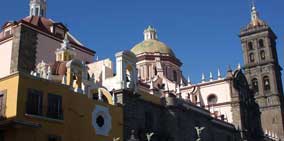
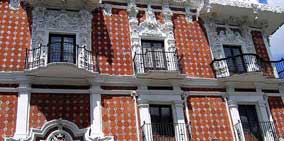
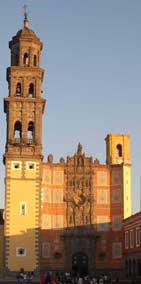
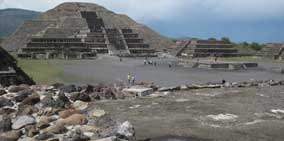

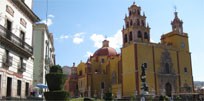
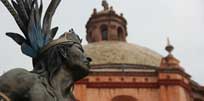
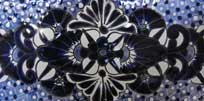
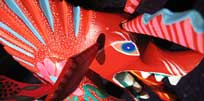
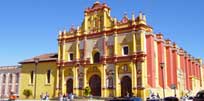
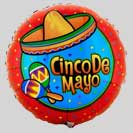 Celebrate Cinco de Mayo, commemoration day of the Battle of Puebla (1862), by learning some real Spanish -- not just the word cerveza -- south of the border. Be in impressive, colonial Puebla itself by then, or somewhere else in Mexico, to join the fiesta.
Celebrate Cinco de Mayo, commemoration day of the Battle of Puebla (1862), by learning some real Spanish -- not just the word cerveza -- south of the border. Be in impressive, colonial Puebla itself by then, or somewhere else in Mexico, to join the fiesta.